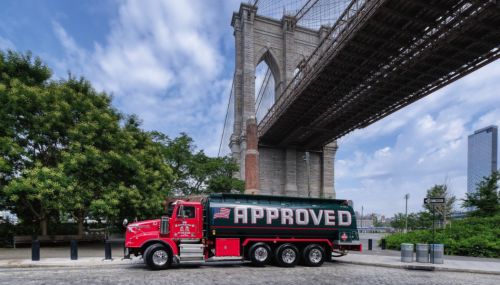All
New Law Offers $600 Credit for Heating System Upgrades
by Jim Collura, NEFI

Oil-fired boilers and furnaces your company installs in 2023 and onward likely to qualify
Beginning next year, homeowners who have qualifying oilheat systems installed could be eligible for a $600 tax credit under the recently enacted Inflation Reduction Act (IRA). Eligible systems include any oil-fired furnace or hot water boiler installed between January 1, 2023 and December 31, 2026 that meets 2021 Energy Star® criteria, which is 87 AFUE for boilers and 85 AFUE for furnaces, and is rated by the manufacturer for use with renewable fuel blends of 20% or more. Beginning January 1, 2027, oil-fired boilers and furnaces must achieve at least 90 AFUE and be rated for blends of 50% or more to qualify.
The new incentive was included as part of a broader expansion of the existing “non-business energy property tax credit” under Section 25C of the IRS Code. Under the new law, a homeowner can receive a tax credit of up to 30% of the cost of qualified energy efficiency improvements made in a tax year. The total is capped at $1,200, except where the retrofit involves installation of a qualified heat pump or wood stove, in which case the limit is $2,000. The credit is non-refundable, which means a homeowner must have tax liability to benefit.
The new 25C credit offers homeowners a “menu” of choices listed in the below chart. This credit can be taken annually through 2032. So, while the total amount is limited to either $1,200 or $2,000 per tax year, the homeowner can defer some improvements until later years to take advantage of the larger benefit. Note again that these changes do not go into effect until January 1, 2023, which means installations and improvements made in the 2022 tax year are ineligible.
Where listed below, “CEE” stands for the “Consortium for Energy Efficiency,” a nonprofit organization comprised of U.S. and Canadian gas and electric efficiency program administrators. CEE publishes an annual list of heating and cooling equipment that meets its criteria for high levels of efficiency performance. Heating systems other than oil-fired furnaces and boilers and biomass (i.e., wood and pellet) stoves must meet minimum CEE efficiency ratings listed below to qualify for the credit.
Beginning in 2024, the IRA requires manufacturers of appliances and equipment to assign each product that qualifies for the 25C credit a product identification number. The taxpayer will be required to enter this number on the tax return for the year it was placed into service. It is unclear whether the IRS will waive this requirement for 2023, or require it be submitted later as part of a separate form or in the taxpayer’s 2024 filing. NEFI awaits additional clarification from the IRS on this and many of the other changes to the 25C tax credit.
The IRA also modifies and extends tax credits for residential “renewable energy” property (e.g., solar panels, geothermal systems, and battery storage technology) and efficiency improvements in commercial buildings. It also creates two point-of-sale rebate programs that will be administered by states - one for the installation of all-electric appliances and the other for proven envelope efficiency savings. However, the U.S. Department of Energy must first issue guidance to state agencies. Each state must either create rebate programs or explain how they will be integrated into existing programs. The process could take months or even years to fully roll out, and funds available for rebates are expected to be limited at least initially.
Jim Collura is Vice President and Director of Government Affairs for NEFI. He can be reached at 202-441-8857 or jim.collura@nefi.com.
| Property or Improvement | Max. Amount | Minimum Efficiency & Other Requirements |
| Oil Furnace or Hot Water Boiler | Up to $600 | 2023 - 2026: 2021 Energy Star® and certified B20 compatible 2027 - 2031: 90 AFUE and certified B50 compatible |
| Gas Furnace or Hot Water Boiler | Up to $600 | CEE highest efficiency tier (not including advanced tier) for year placed into service |
| Oil or Gas Water Heater | Up to $600 | CEE highest efficiency tier (not including advanced tier) for year placed into service |
| Electric or Natural Gas Heat Pump | Up to $2,000 | CEE highest efficiency tier (not including advanced tier) for year placed into service |
| Biomass (Wood) Stove | Up to $2,000 | Thermal efficiency rating of at least 75 percent |
| Central Air Conditioner | Up to $600 | CEE highest efficiency tier (not including advanced tier) for year placed into service |
| Electric Panel Upgrade | Up to $600 | Must be needed for other efficiency improvements and be upgraded to at least 200 amps |
| Window or Skylight | Up to $600 | Energy Star® Most Efficient |
| Exterior Door | Up to $250 (or $500 for multiple) |
Applicable Energy Star® requirements |
| Insulation Material or System (Includes Air Sealing) |
Up to $1,200 | Must meet prescriptive criteria from most recent International Energy Conservation Code |
Related Posts
 From Blue Flame to Biofuels
From Blue Flame to Biofuels
Posted on June 25, 2025
 HEAT Show Announces Fenway Park Backyard BBQ
HEAT Show Announces Fenway Park Backyard BBQ
Posted on May 15, 2025
 Delivering New York City’s Clean Energy Solutions
Delivering New York City’s Clean Energy Solutions
Posted on May 14, 2025
 Are You a Leader or a Boss? The Choice is Yours
Are You a Leader or a Boss? The Choice is Yours
Posted on May 14, 2025
Enter your email to receive important news and article updates.
